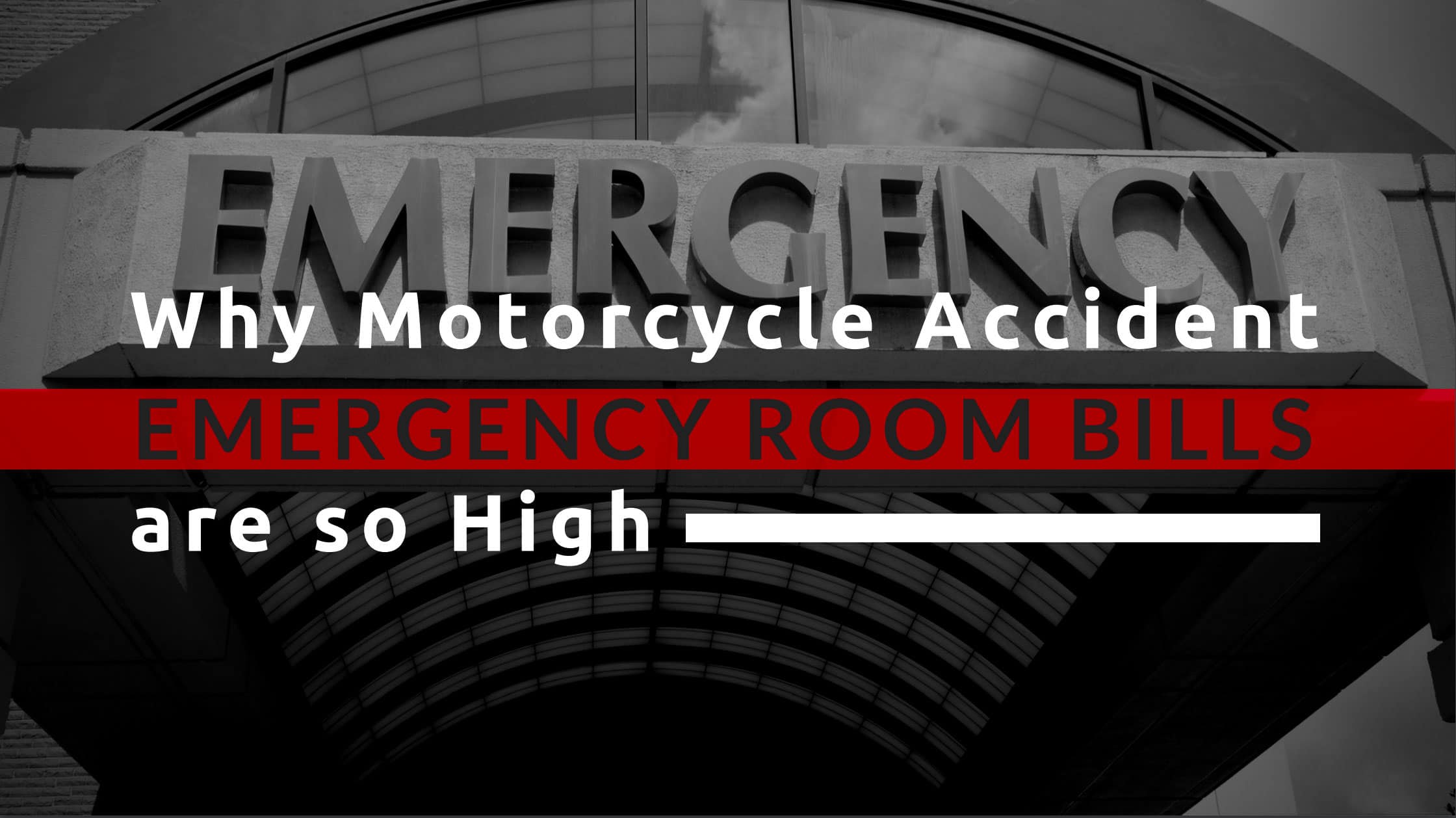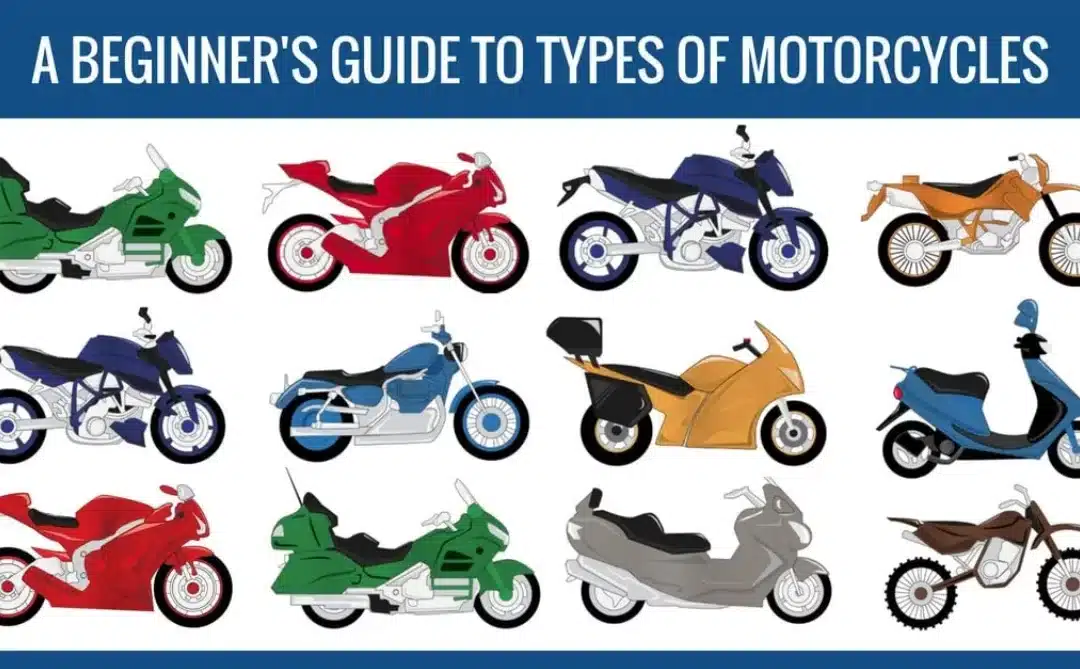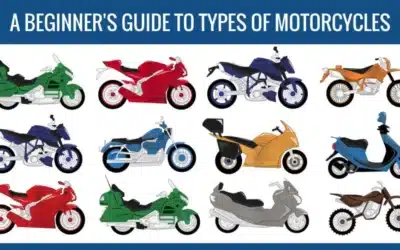Let’s face it. Motorcycle Accidents result in far more serious injuries than Automobile Accidents. This fact is the source of the common belief that riding motorcycles is dangerous and life-threatening, and that anyone who rides is suicidal. Worse, this leads to beliefs that cause horrible discrimination against riders. I want to talk about something that involves discrimination against riders, and that costs motorcycle riders a lot of money when they need to go to the emergency room after an accident.
Sometimes the injuries are life-threatening. Sometimes there are severely broken bones. Sometimes the injuries are simply not that great. This should be obvious. Riders who wear “All the gear, All the time”, seem to do better overall than those riders who don’t wear all the gear, all the time.
I recently had a case involving a shoulder injury, with what could have been a four thousand dollar emergency room bill. However, because the injury occurred on a motorcycle, the emergency room bill was more like sixteen thousand dollars. It became a big issue, even though the medical carrier paid it, because insurance companies, and Kaiser, have to be paid back out of accident case settlements for the amounts they paid out. In other words, this poor rider was asked to pay $16,000 from his settlement for $4,000 in treatment. He couldn’t figure out what hit him, in addition to the vehicle that hit him.
In looking at the bill, he was charged a little over twelve thousand dollars for a “trauma activation”. This emergency room service involves the situation where, when you get to the emergency room, a trauma team is standing by. As you are wheeled into the ER, a surgeon, anesthetist, emergency room doctor, and anyone else that could be needed are standing there, ready to go. When you need it, this is a life saver (quite literally). Well worth paying for.
Here’s the hook: because the trauma team has to be assembled in advance, a “trauma activation” can only be called by the paramedics and fire department rescue team, who can do this because they evaluate the patient at the scene. Then they can call ahead, and ask to have a trauma team waiting.

I have discussed trauma activations with fire department rescue workers. From their perspective, even with lesser injuries, if they have any reason to suspect the need for a trauma team, they ask for it. They err on the safe side, since it is better to take the precaution than it is to have the injured motorcycle rider get to the emergency room without having everything they need. So far, this still makes sense.
Where the trauma activation can fall down, however, is that the emergency rooms publish written”trauma activation criteria”. They include specific guidelines that include the type of injury, as you would expect. They also include things like whether the injured person was thrown from the vehicle, and whether the accident involved a motorcycle accident at more than 20 miles per hour.
That’s right. FOR EVERY MOTORCYCLE CRASH THAT TAKES PLACE OVER TWENTY MILES PER HOUR, THERE SHOULD BE AN AUTOMATIC TRAUMA ACTIVATION. THIS COSTS THE RIDER, AND HIS INSURANCE CARRIER, MORE THAN TWELVE THOUSAND DOLLARS, WHICH IS ADDED TO THE BILL.
You would think that there would be different levels of trauma activation, and there are. For a trauma activation with a more life-threatening injury, there are more people waiting on the trauma team. The cost, however, is usually the same.
What this means is, that if you have a 25 mile per hour accident, you are wearing all of your gear, and your only injury is a broken clavicle or other relatively simple to treat injury, you will arrive at the emergency room with a lot of people standing there waiting for you. You (or your insurance carrier) will pay for these people.
Have You Been Involved In A Motorcycle Accident?
Our professional legal team screens submissions and assigns cases to some of the best motorcycle lawyers in the US.
If you have the identical accident on a skateboard or bicycle, it will be $12,000 cheaper.
This is not only a problem for motorcycle riders, it is a problem for emergency rooms.
So, the question is, does research bear out the need for trauma activations even without apparent injuries that justify the activation? In other words, do motorcycle riders have hidden head or other injuries requiring major intervention in the emergency too, and does this justify putting a trauma team on “read”? The answer is, NO, IT DOES NOT.
Remember, that emergency rooms are not there to treat your injuries. They are there to provide the necessary emergency care. Follow up care is done in other parts of the hospital, or through your outside physicians. The trauma activation for motorcycle riders would only make sense if they had enough hidden injuries that also were the type of injury requiring emergency care. Notice, for example, that many serious permanent injuries are not necessarily treated in the emergency room. For example, a mild traumatic brain injury, while serious, is usually treated with MRI and other diagnostic studies, and then followed by a neurologist. This contrasts with bleeding of the brain, which may call for emergency surgery. It is way above the pay grade of the paramedics and fire department rescue teams to guess whether a head injury needs immediate treatment. So, with a head injury, however indicated, we are going to be conservative, and go with the emergency room trauma.
That said, the National Institute of Health found that riding a motorcycle in an accident was “one of the four least predictive” criteria for calling a trauma activation.
Since the emergency room would prefer not to be calling trauma teams together unnecessarily, and since motorcycle riders who are in accidents don’t want to pay for this, it seems that it is in everyone’s best interest to review this practice.
Have you been involved in a motorcycle accident?
Our professional legal team screens submissions and assigns cases to some of the best motorcycle lawyers in the US.








